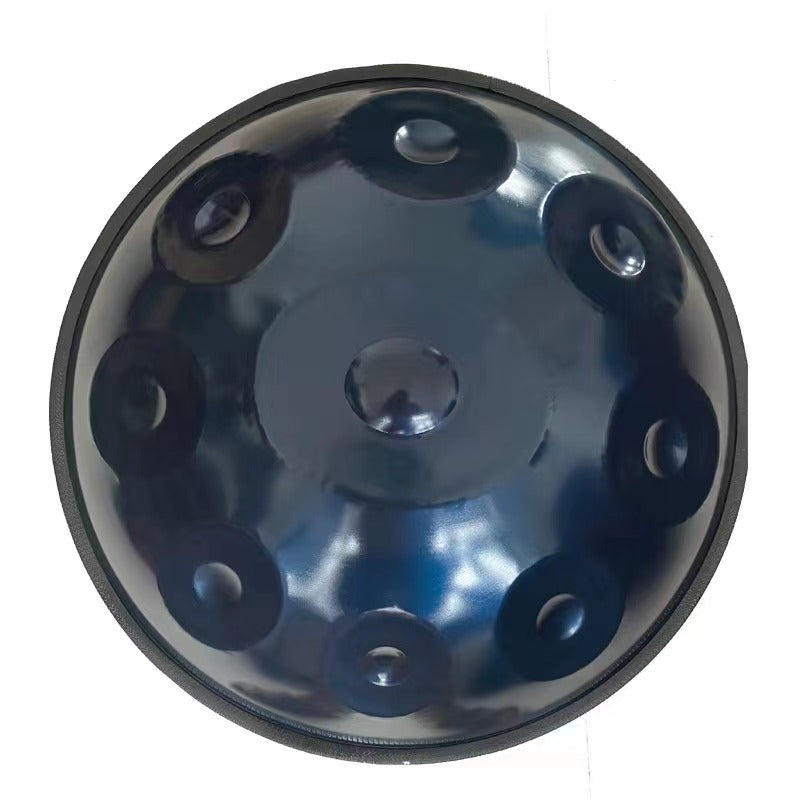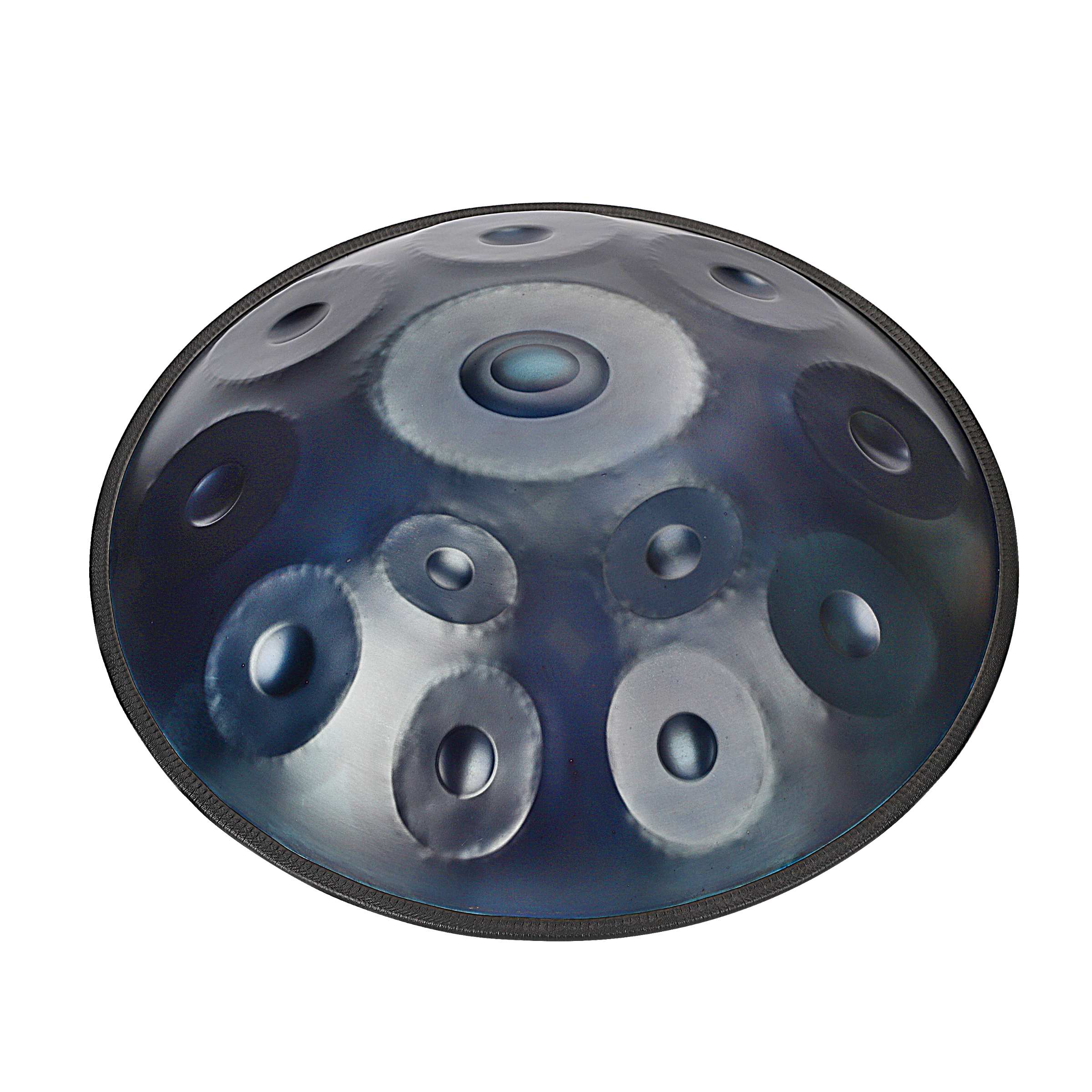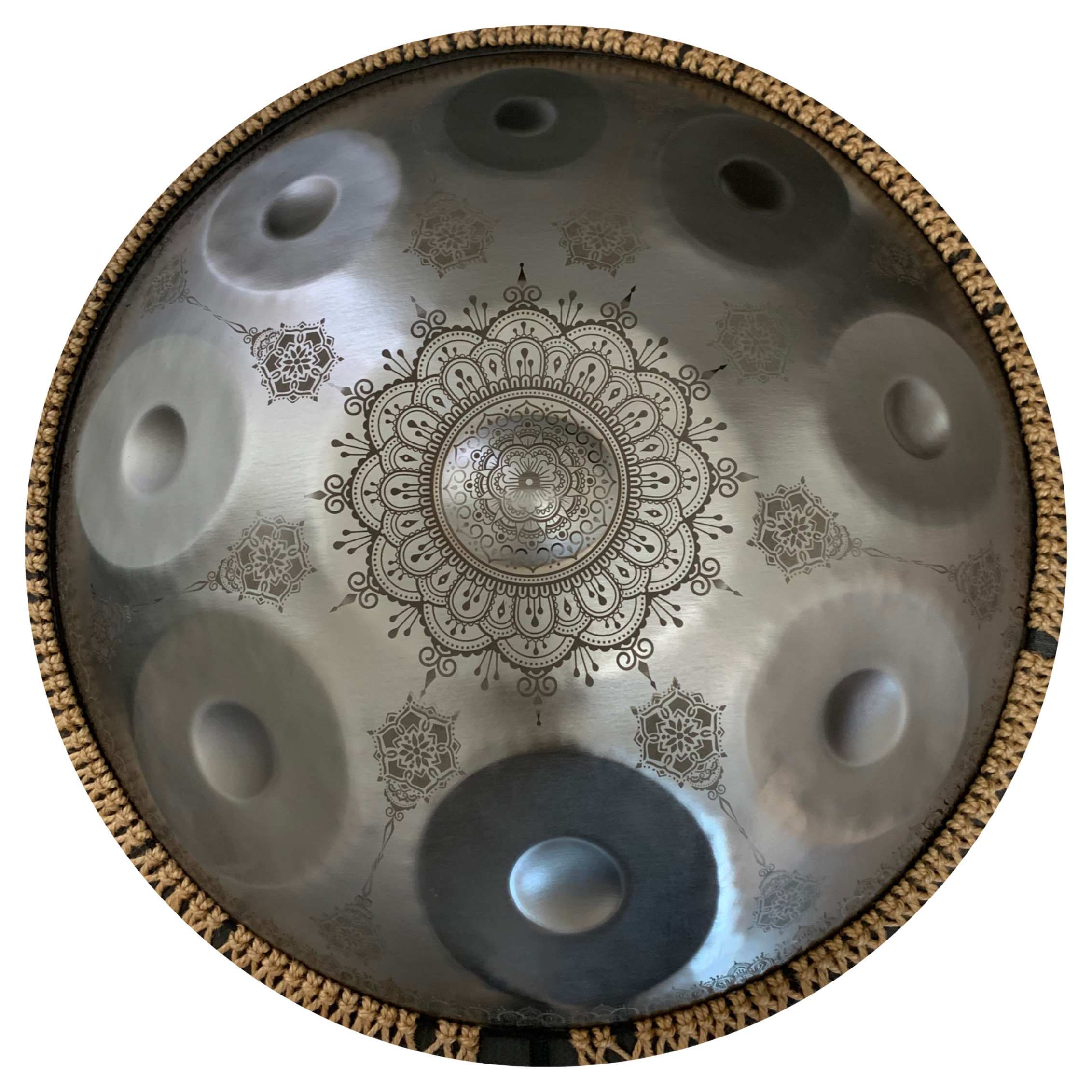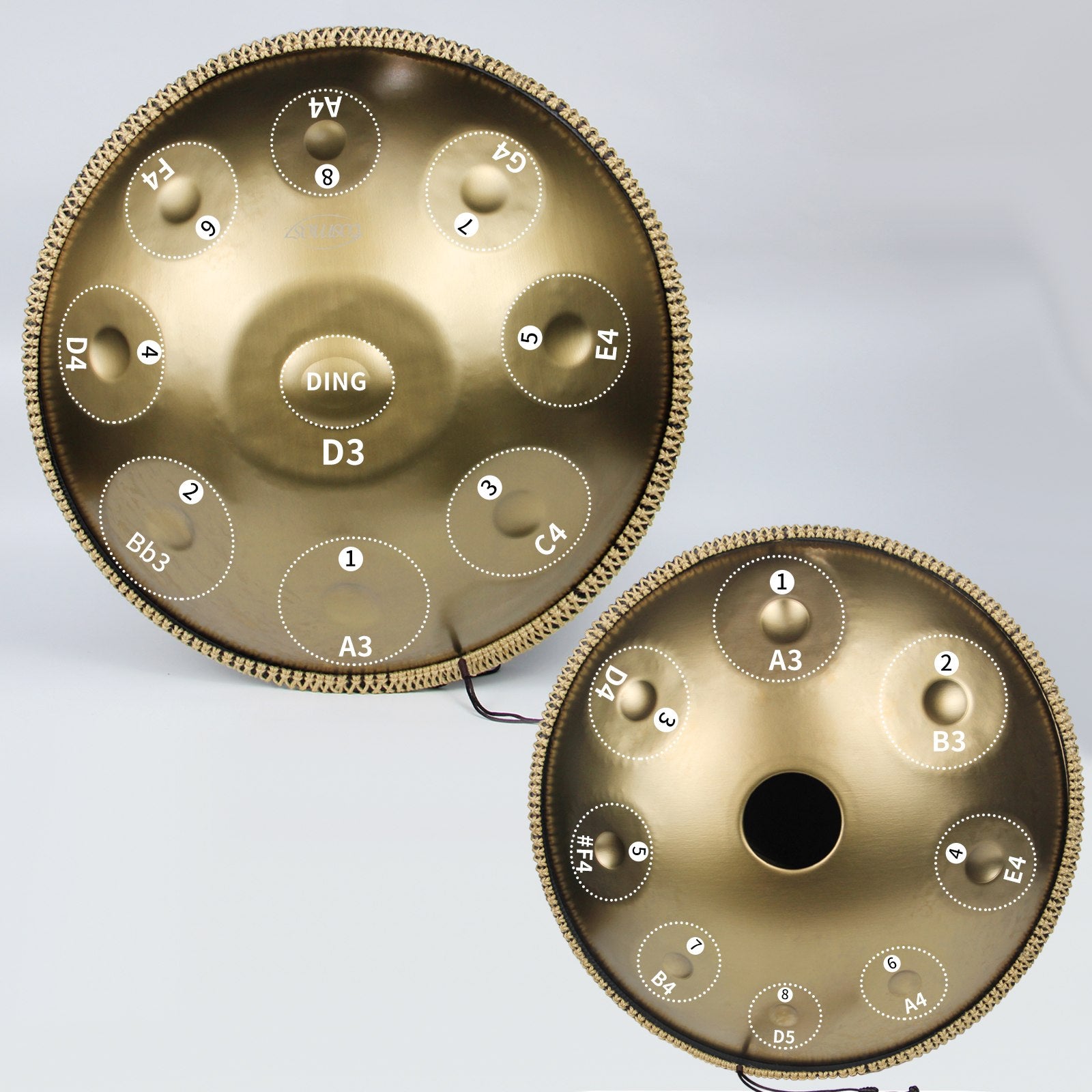Looking to buy your first handpan? Check out this article to learn everything you need to get your first handpan!

Are you also one looking to get your hands on a good Handpan? Don’t fret; we’re here to help.
There are a lot of unique characteristics of this new drumming instrument, as well as its market, that we must examine.
This article will be your best friend on the topic and guide you in buying a good handpan. We will help you avoid traps so you can purchase your first handpan with confidence. It’s important to do your research as well and take your time if you want to ensure you make the appropriate decision. Let’s begin!
Which handpan should you choose to get started?
There are numerous factors to consider, including the number of notes, the range, and the material used to build the handpan. All of these greatly influence the instrument’s sound, the price, the manufacturer’s brand, and the ease with which the instrument may be retuned.
Quality is Key
The quality of a handpan is primarily determined by its sound rather than its appearance, shape, or color. Listen carefully when trying out a handpan (or listening to a demo). Can you clearly distinguish each note? Is the overall sound harmonious?
When struck, the notes should produce a stable frequency without variations or unpleasant vibrations. The sustain, or the duration of each note, should be sufficiently long. The notes should create a mesmerizing effect when played.
Additionally, ensure all the notes harmonize with the central “ding.” There should be no discordant noise or unwanted vibrations when the notes are played together.
With that in mind, let’s start by looking at how to identify if a handpan is of good quality.
Listen to Handpan Music
First and foremost, if you are unfamiliar with listening to handpan music regularly, you must improve your listening abilities. Before purchasing, view and listen to a few videos (ideally with headphones) on social media. Immerse yourself in the world of handpans for a time with the several accessible handpan music platforms. Also, if feasible, attend a concert with performers playing handpan. The more familiar your ear is, the more you can trust your listening abilities and estimate the sound quality of a handpan.
Criteria for a Good Handpan
Then, to proceed, you must determine whether the quality standards listed below are met, as they will support your analysis and assist you in validating the high quality of a handpan. At a minimum, the instrument should have the following parameters.
- Have a harmonic scale overall.
- Balanced notes for power and sustain, with minimal crosstalk.
- Well-defined and tuned harmonics.
And if you are unfamiliar with these concepts or have difficulty defining these boundaries, do not fear; your ears are there to help you. If they notice a little discord or uncomfortable vibration, heed your instincts and switch to another model.
If, on the other hand, all of the elements are present, you’re off to a solid start and can continue with your qualitative investigation.
Finish of a Handpan
After the sound, let’s quickly discuss the instrument’s finish because minor nuances can make all the difference. An instrument with a pristine finish frequently indicates higher quality than one with flaws.
Pay attention to the surface of the notes, the presence of significant scratches, and whether the instrument has a profile or is identifiable by a serial number.
However, identifying these differences can be difficult, if not impossible, for the inexperienced, especially while using the internet. Finally, an instrument with a beautiful finish may be poorly tuned or poorly made, so be wary of the allure of aesthetics and inexpensive pricing, particularly online.
Material of a Handpan
For the most part, handpans are made using two materials:
- Stainless Steel
- Nitrided Steel
The latter is more commonly found in Handpans, although Stainless steel is also quickly becoming the industry standard due to its stability and superior resistance to rust. Both of them also produce different types of sound.
Choosing Between the Two Materials
Let’s take a detailed tour of both handpan materials.
Stainless Steel Handpans
Stainless steel handpans produce a warm, deep sound rich in harmonics. They also have a longer sustain (the length of the notes) than those made from nitrided steel.
Nitrided Steel Handpans
Nitrided steel handpans have a shorter sustain, making them ideal for playing rhythmic parts where precision is key. Their sound is more intense so that you can play them outdoors easily.
Scale for a Handpan
Handpans that you want to buy come in different scale types, each of them having a different sound. This is why you should take your time and listen carefully to different scales to find the one that resonates with you. Various scales can evoke a range of emotions, from joy and melancholy to a sense of escape.
You can easily find examples of the different scales online, especially on platforms like YouTube. There is no single “best” scale; the right one is the one that personally resonates with you.
It’s important to wait until you feel a strong connection with a scale before deciding.
Technically, there are three main types of scales
Major Scales
Major scales are often found in light-hearted music, like anthems, and convey feelings of happiness and joy. Choose this scale if you want to express a positive mood. However, it may feel limiting as it primarily conveys joyful emotions.
Minor Scales
The minor scale is ideal for introspection and is commonly used in films to express intense, dark feelings, tension, and mystery. This scale is more versatile than the major scale.
Oriental Scales
Oriental scales are instantly recognizable and evoke a sense of escape, often reminding listeners of Asia. These scales are ideal for meditative environments and are frequently used in yoga or meditation classes to help people relax.
Taking your time at this stage is essential. The scale you choose will accompany you throughout your playing sessions, so it’s important not to rush the decision.
When you listen to a scale, pay attention to the emotion it evokes. Is it joy, sadness, or something else? Ensure that the emotion aligns with what you seek.
Tuning
Following the scale, another key consideration is your handpan’s tuning fork.
There are two different tunings: 432-hertz frequency and 440-hertz frequency.
The 432-hertz frequency does not allow a handpan player to play in a group; it is a free tuning for musicians who want to use their handpan holistically. Some claim that this frequency has therapeutic qualities.
If you want to play the handpan with other musicians, you must utilize 440-hertz tuning. This is the global pitch. Choosing a handpan tuned to 440 hertz ensures you can play or study your instrument in a group setting.
Number of Notes
Next, you must decide on the number of notes your handpan will have, determining its musical range.
Several options are available, catering to both beginners and more advanced players.
The 9-Note Handpan: A 9-note handpan includes 8 notes in addition to the “Ding.” This is the most common choice and is recommended for beginners. Once you're comfortable with a 9-note handpan, you can progress to instruments with 10 notes or more.
Handpans with 10 Notes or More: These models are designed for more experienced players who have already practiced on a 9-note handpan.







